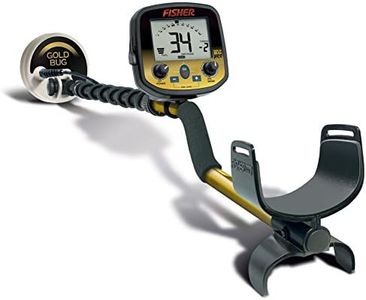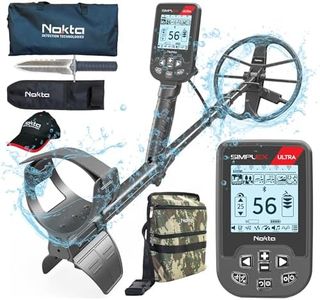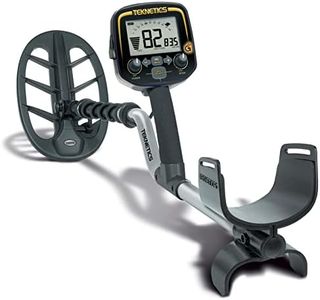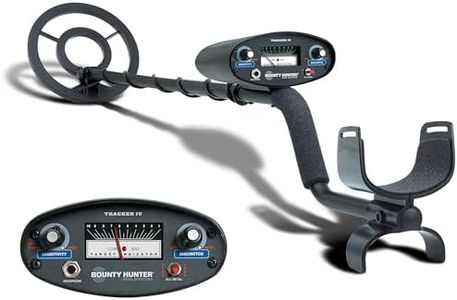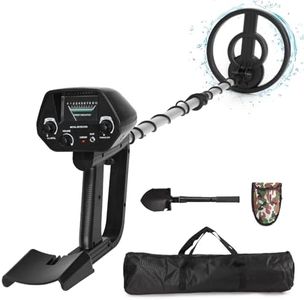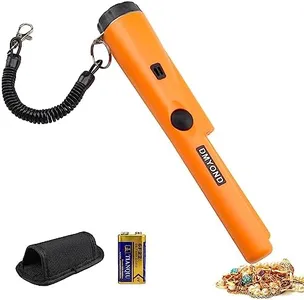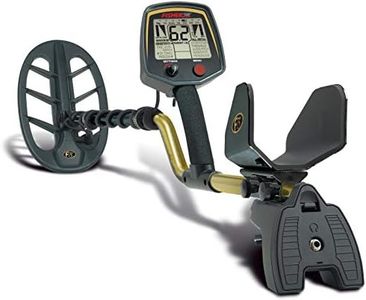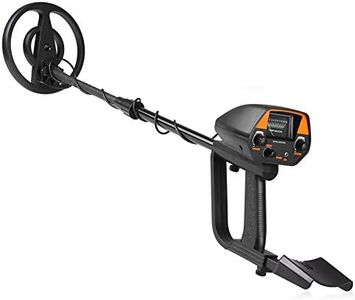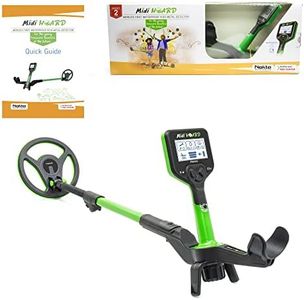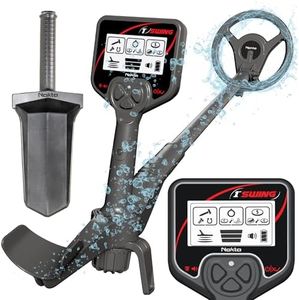We Use CookiesWe use cookies to enhance the security, performance,
functionality and for analytical and promotional activities. By continuing to browse this site you
are agreeing to our privacy policy
10 Best Metal Detector For Gold Nugget
From leading brands and best sellers available on the web.By clicking on a link to a third party's website, log data is shared with that third party.
Buying Guide for the Best Metal Detector For Gold Nugget
Choosing a metal detector for finding gold nuggets can be both exciting and overwhelming. Gold prospecting is a unique hobby that demands a detector that is sensitive enough to pick up tiny pieces of gold but also robust enough to filter out unwanted signals from iron and other minerals in the ground. Your goal is to find a device that matches the type of ground you'll be working in, the size and depth of nuggets you're hoping to find, and your level of experience. Understanding how the key features work together will help you select a detector that makes your gold hunting as efficient and enjoyable as possible.Operating FrequencyOperating frequency refers to how many times per second the metal detector transmits an electromagnetic signal into the ground. This is crucial because detectors running at a higher frequency are more sensitive to smaller gold nuggets, while lower frequencies are generally better at detecting larger, deeper objects. Frequencies are usually divided broadly: low (around 3 to 7 kHz), medium (8 to 15 kHz), and high (16 kHz and above). For gold nugget hunting, detectors with higher frequencies (typically above 18 kHz) are more effective because they catch small pieces that lower frequencies might miss. Consider where you’ll be hunting and for what size nuggets—the smaller and shallower the gold, the higher the frequency you want.
Ground BalanceGround balance is a detector’s ability to ignore minerals in the soil, such as iron or salt, so that you only hear signals from metal objects, like gold. In mineral-rich ground, improper ground balance can cause a lot of noise and false signals. There are generally three types: preset, manual, and automatic. Preset ground balance is simple but not flexible, manual lets you control the adjustment, and automatic balances itself as you move. If you plan to search in diverse or highly mineralized ground, a detector with manual or automatic ground balance will save you time and frustration, especially if you’re searching for small targets.
Sensitivity AdjustmentSensitivity adjustment allows you to control how ‘deep’ or ‘weak’ a signal the detector picks up. This is important because setting it too high in mineralized ground can result in a lot of chatter, making it hard to distinguish real finds. Set it too low, and you might miss smaller nuggets. Sensitivity is usually adjustable via a dial or buttons, letting you fine-tune your machine according to the area’s ground conditions and your target size. If you’re searching in areas with a lot of mineralization or trash, the ability to adjust sensitivity helps you focus on what you want to find.
Search Coil Type and SizeThe search coil is the round or elliptical part you sweep above the ground. Coil size and shape matter: smaller coils are more sensitive to small nuggets and work well in tight or cluttered areas, but cover less ground and have less depth; larger coils can search deeper and cover more area, but may miss tiny gold. There are also different coil designs; concentric coils are good for general use and discriminating between targets, while Double-D coils handle mineralized ground better and give a more stable response. Think about where and what size of gold you’ll be searching for—choose a smaller coil for small nuggets and trashy ground, and a larger one for depth and open spaces.
DiscriminationDiscrimination is the detector’s ability to filter out unwanted metals, like iron or aluminum, so you can focus on gold. Some detectors offer adjustable discrimination levels, while others have limited options. Too much discrimination can make you miss small or oddly shaped nuggets, as gold signals might get filtered out. For nugget hunting, it’s usually best to use minimal discrimination, just enough to silence obvious junk, but not so much that you miss gold. Adjust this based on your area’s trash level and your patience for digging up non-gold targets.
Weight and ErgonomicsWeight and ergonomics determine how comfortable the detector is to use over long periods. Some are lightweight and easy to handle, while others can be quite heavy, especially when fitted with large coils. Balance, handle design, and adjustability of the stem all contribute to how the machine feels in your hands. If you plan to be outdoors for extended periods or have any mobility concerns, opt for a lighter, well-balanced detector that won’t fatigue you quickly.
